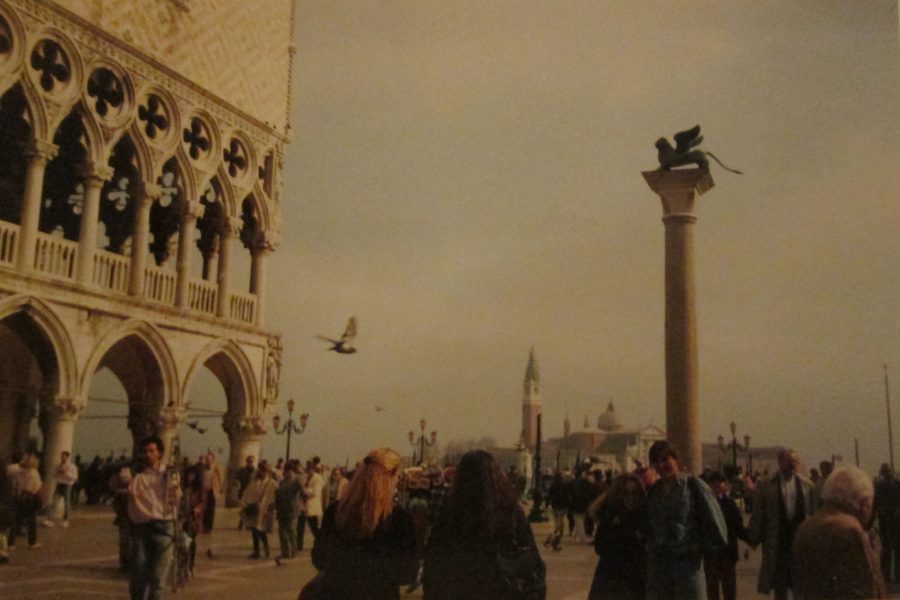
I came home from my term abroad with rolls and rolls of undeveloped film. The excitement of seeing the real photos months later inspired me to document my adventures in scrapbooks. I very rarely looked at the books again…until my daughter’s increasing reading habit prompted the albums’ resurgence (for better or worse).
Two books triggered her interest in my travels – Architecture According to Pigeons and The Lonely Planet’s Amazing World Atlas.
Speck Lee Tailfeather, the pigeon hero and narrator of Architecture According to Pigeons, travels the world admiring interesting structures. He explains the architectural and engineering highlights of churches, skyscrapers, bridges, and castles. Quite comically, he shares the appeal of the buildings, or lack thereof, to pigeons as a whole and to him.
A fan of Jack and Annie of Magic Tree House fame, my daughter had read quite a few books set in foreign countries. She liked the balance the Lonely Planet Atlas struck between cultural, scientific, geographical, and natural facts. The illustrated maps (much more comparable to  maps found in children’s books) and the photographs of real people and activities made the material accessible and enjoyable.
maps found in children’s books) and the photographs of real people and activities made the material accessible and enjoyable.
My daughter decided we should read the two books together. For each building the pigeon described, we looked up the country in the atlas and went through a comparative process:
- Is the building also in the atlas? If not, what building is used to represent the country, and why?
- Had I ever been to this place? Yes – show me the pictures. No – why not?
- And inevitable follow up – can we go?
I loved this exercise, not only because, for me, it was more fun to read an atlas at random than cover to cover, but also because both books gave her the perfect amount of information – enough to feel like she learned something and could recognize some aspect of the building or place but not so much as to overwhelm or bore her. Architecture was an ideal introduction to where STEM (science, technology, engineering, and math) becomes STEAM (science, technology, engineering, and math + ART) – she could relate to the practicality of needing cool buildings to be religious meeting spaces or museums or dwellings while also enjoying the stories of the people who designed and built them.
For her birthday she got Rosie Revere Engineer in which a young girl’s dreams of building things is crushed by a well-intentioned male adult laughing at her failure. A jolly Rosie the Riveter-like character renews her interest in engineering by showing her that failure is a necessary step in the design process. The pigeon looked at bridges and skyscrapers in a similar way – he showed how each technological and design innovation resulted in longer bridges and taller buildings.
I hope the new evolution in acknowledging the critical creativity embedded in STEM will help more girls feed a love for architecture or inventing or physics. Research shows that even though more women study in STEM, just 12 percent of engineers are women, and the number of women in computing has fallen from 35 percent in 1990 to just 26 percent today. Here are some tips for parents to encourage creativity in all subject areas.
Who knows where my daughter’s interests will lead her, but I appreciate how helpful books (and vintage photography) can be in introducing her to the possibilities.



Meredith,
I love so many of the articles that are written on your CLiF site…Today I have a moment to comment on how much I enjoyed reading yours. Thank you for sharing your daughter’s love of reading and your interests, and for inspiring others to learn from your experiences as a mother and a lover of books!